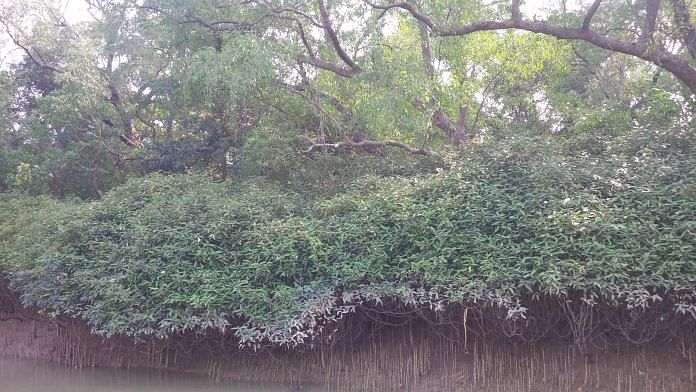In the coastal state of Odisha, India, women farmers have turned a crisis into an opportunity.
Cyclones, rising sea levels and increasing water salinity have devastated their communities and turned swaths of fertile ground into wasteland. For years, these women lost income, their health and nutrition suffered, and they found themselves ever more marginalised.
Then, through a development programme focussed on gender, they came up with simple, innovative solutions that helped to transform their communities. Two of these innovations were mangrove nurseries and floating gardens.
Run by women, the mangrove nurseries provided an income through growing trees to rehabilitate forest wetlands. The forests act as natural bio-shields against the tidal surges of severe storms and protect the life and property of coastal communities. Rich in biodiversity, they provide goods and services such as food, materials and aquaculture. They are also powerful carbon sinks, vital for battling climate change.
https://www.facebook.com/WEFvideo/videos/365287617453867/
Women also established floating gardens to combat water and land salinity. These micro-farms are made of bamboo and a culture bed of local materials like dried water hyacinth, manure, compost and silt. On them, they grow spices and vegetables, providing food security and a source of income.
These innovations came about because local development practitioners set up village committees with an equal number of local women and men as members. Women became more empowered to highlight the challenges they faced and thus were in a better position to solve them. The programme is called Paribartan, which means ‘transformation’ — a fitting moniker given that the lives of whole communities are being radically changed for the better.
The success of this focus on gender is by no means a one-off. A grassroots women’s recycling cooperative in Yucatán, the peninsula which separates the Gulf of Mexico from the Caribbean Sea, gained national recognition by radically improving solid waste management and inspiring hundreds of people in dozens of coastal communities to join wetlands and beach cleanup projects to tackle the scourge of plastic waste.
In the Philippines, meanwhile, gender mainstreaming has reduced poverty and led to integrated fisheries management techniques which combine fish production, mangrove development and the regeneration of coastal biodiversity while providing options for increasing income and food security for poor fisher households. Like the cases of women in Odisha and Yucatán, these innovations were highlighted in research this year from UN Environment.
People are beginning to realise the importance of gender across all sectors of ocean activities. The UN’s International Maritime Organization and World Maritime University are driving change to address the gender gap in the maritime, ports, fishing and related industries. Last month, an international, all-female expedition team was launched by National Geographic, the Wildlife Institute of India and the University of Dhaka to study and better understand how plastic waste travels from source to sea along the Ganges River. They aim to fill critical knowledge gaps around plastic flow and develop holistic and inclusive solutions.
This week, which marks the 11th Annual World Ocean Day, we want to highlight the vital role that gender equality has to play in conserving humanity’s most important and most under-appreciated treasure: the ocean.
The ocean feeds us, gives us air to breathe and is vital for lives and livelihoods across the world. It guarantees our existence on this planet and holds the key to overcoming some of our most pressing challenges, such as combating climate change and producing enough food sustainably for 10 billion people by the middle of this century. This is why countries of this world agreed to a comprehensive, universally agreed plan to protect the ocean: Sustainable Development Goal (SDG) 14, ‘Life below water’, and its 10 specific targets. We want to show that a focus on gender will help us meet these targets.
In the fisheries sector, for example, women constitute about half the workforce. Yet they are largely concentrated in low-skilled, low-paid, seasonal jobs without labour rights protections. Men are more frequently involved in offshore and high-value fisheries according to the UN Food and Agriculture Organization and make up 81% of those involved in fish and aquaculture harvesting. Women, on the other hand, are overwhelmingly (90%) involved in secondary fields such as fish processing. They earn approximately 64% of men’s wages when carrying out the same work in aquaculture. Whilst women often depend on the sustainability of local resources, as men do, they frequently have a minimal voice in the governance of those resources.
This article was originally published in The World Economic Forum.
Also read: Avni row still on, Maneka Gandhi now urges CM Naveen Patnaik to save Odisha’s elephants






